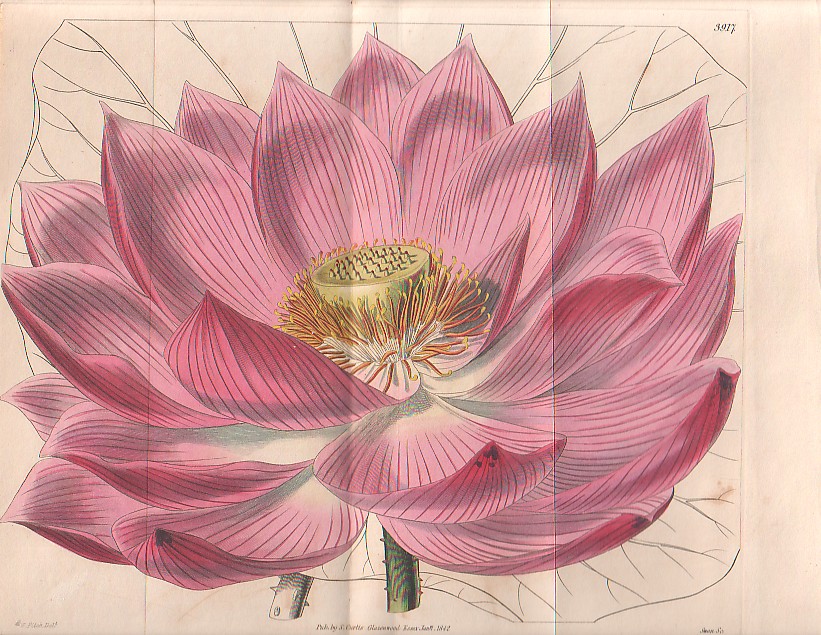

"Nelúmbium speciósum," the Indian lotus, a botanical drawing by Curtis, 1842 (1806); *another view*
Source: ebay, Mar. 2008
*"Hindoo and Mahomedan Buildings," a steel engraving by Roberts and Challis, 1850's*
Source: ebay, June 2008
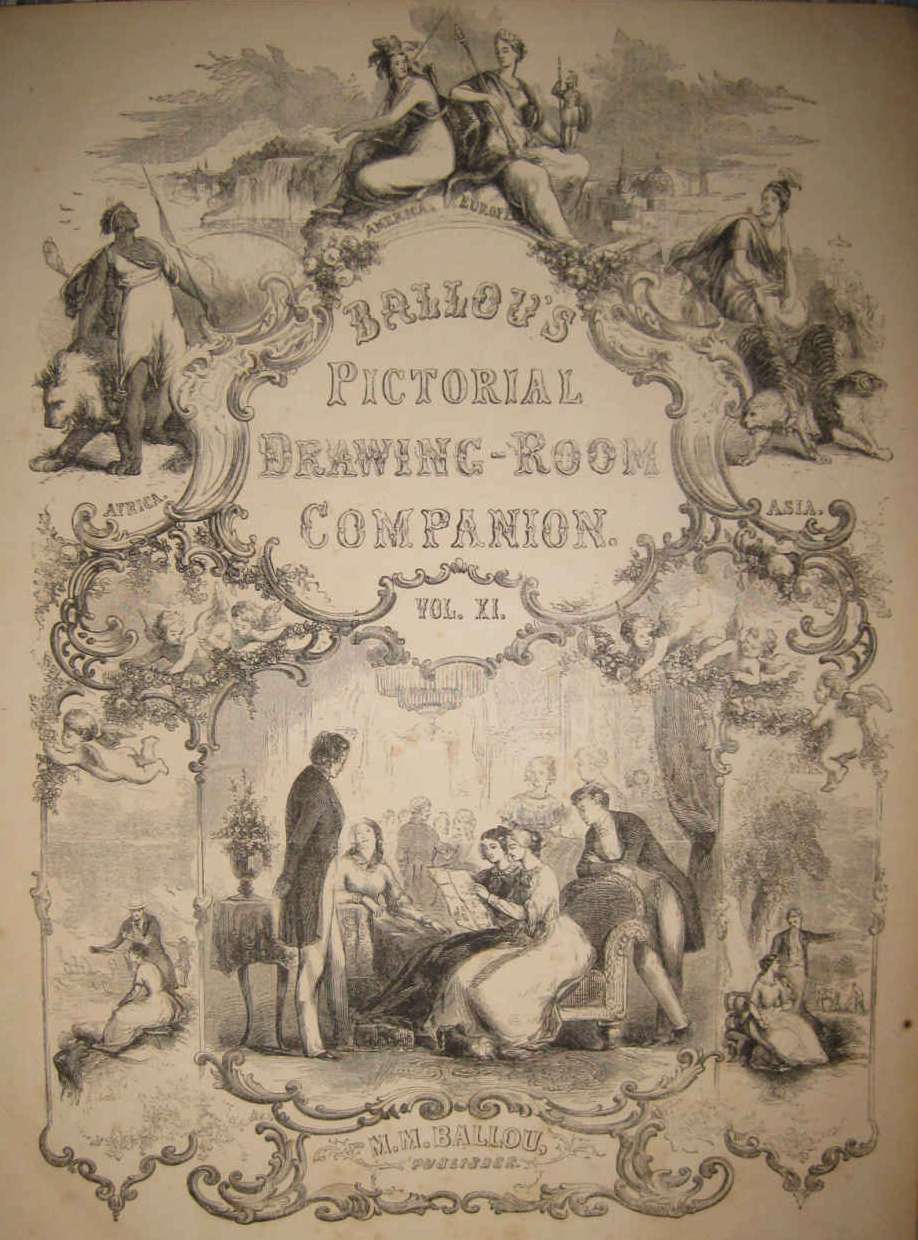

"The East India House Museum"in London, a wood engraving from the Illustrated London News, 1858; very large scans of the engraving: *left half*; *right half*
Source: ebay, Aug. 2005
Source: ebay, May 2007
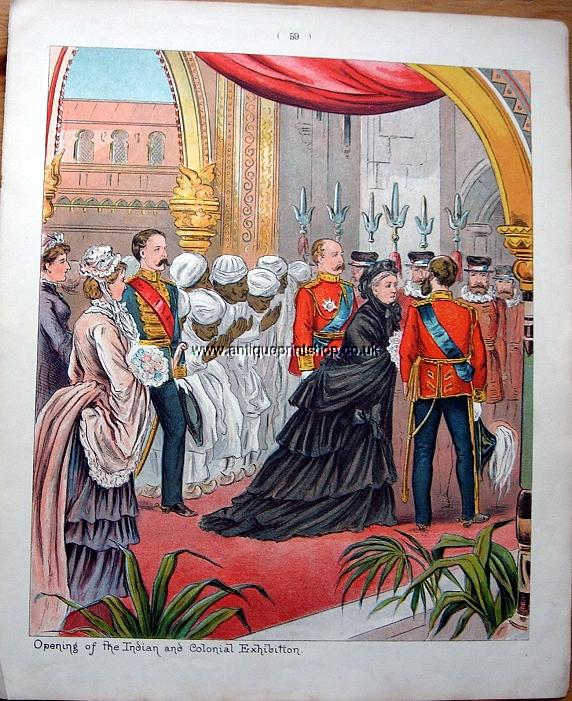
Queen Victoria attends the opening of the Indian and Colonial Exhibition; a chromolithograph, 1888; *the vestibule of the exhibition*
Source: ebay, Nov. 2006
*"House of India, International Exhibition, Paris 1889," a typogravure*
Source: ebay, Sept. 2007
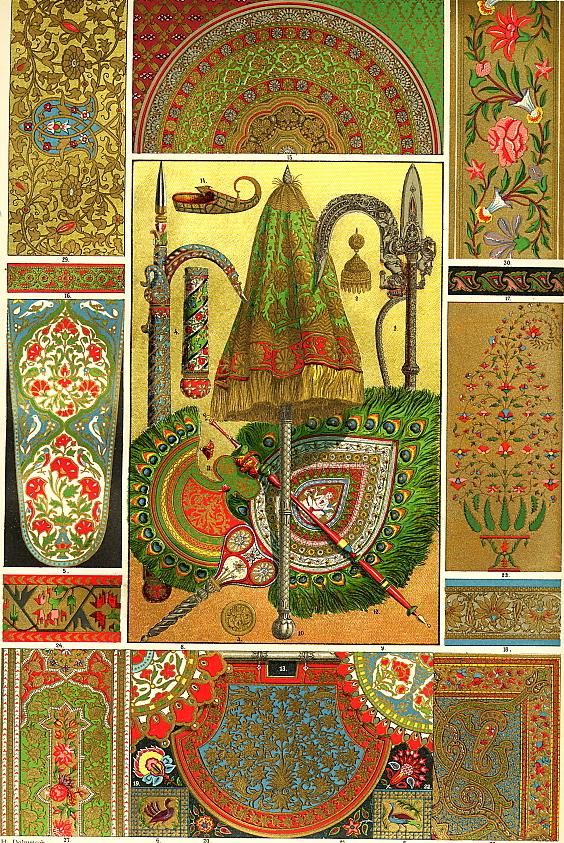
A study of Indian artistic design, from the 1880s
Source: ebay, July 2001
"Color Lithograph from 1880s. Art of India: Metal Work, Embroidery, Weaving and Painting. Printed in Sweden."
From the original accompanying text:
"Artistically employed, especially in goldsmiths' work, was the so-called 'email champlevé'. The parts intended to be enamelled on the metal, were deepened with the burin, narrow rims being left to separate the several compartments. The further process is nearly the same as, so called, 'email cloisonné'. -- A brilliant specimen of that work may be seen in Fig- 4, representing an ancus (instrument used to drive and train elephants). We often meet with illumination in India, betraying however Persian influence and applied to old royal edicts, documents and other manuscripts of religious and poetical contents.
Legend:: Fig. 1. Ancus in chiselled iron.; 2 and 3. Pendants and
button embossed in gold and chiselled.; 4. Ancus, enamelled and
adorned with jewels.; 5-9. Decorations from enamelled arms.; 10.
State parasol with rich gold embroidery.; 11-13. Embroidered
fans.; 14. Covering for the foot, woven in gold and embroidered in
silk and pearls.; 15. Embroidered table-cover.; 16. Border from a
saddle-cloth.; 17. Embroidery on black stuff.; 18. Border from an
embroidered velvet-carpet.; 19-22. Flowers from silk embroidery.;
23. Woven shawl.; 24. Border from woven stuff.; 25 and 26.
Patterns from silk and gold-weavings.; 27. Lacquerpainting.; 28.
Portion of a book-cover in lacquerpainting.; 29 and 30. From
illuminated manuscripts."
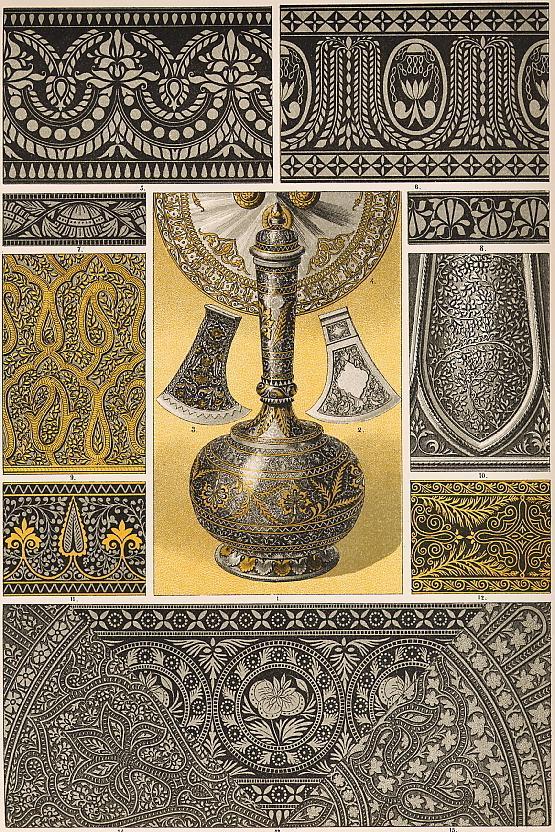
A study of Indian metal-work, from the same collection, 1880's
Source: ebay, July 2005
"The manufacture of decorated arms and metal ware was at all times an important branch of the Indian industrial art, and we have due cause to be astonished at the refinement of taste combined with the highest magnificence of ornamentation. Damascene work, specially exemplified on our plate, is executed in steel, iron or tin-alloy, in the latter case the design being brought out in deep black by the agency of sulfur. The damascened ornaments are made in silver- and gold-foil, fixed on either by pressure or hammering to the metal ground, which has previously been slightly engraved, after which the whole is polished with the burnisher.
Legend: Fig. 1. Tin-vessel with damascened ornaments. 2. Battle-axe with etched decorations. 3. Battle-axe with damascene work. 4. Shield of rhinoceros-skin inlaid and mounted with metal. 5-8. Ornaments from damascened Huhkas (water-pipes). 9. Belly-decoration, executed "en repoussé", of a gilt copper-can. 10. Belly-decoration from a copper-can in repoussé work. 11. Decoration from a damascened tin-vase. 12. Damascene work on steel on a dagger-sheath. 13. Neck-decoration on a damascened tin-cup. 14. From a copper-plate in repoussé work. 15. From a tin-plate in repoussé work.
Fig. 2, 9, 10, 12-15 drawn after original objects from the Royal
"Laudesgewerbeinuseum" at Stuttgart.
1, 5-8 and 11 drawn after original objects belonging to Mr. Paul
Stotz, manufacturer at Stuttgart."
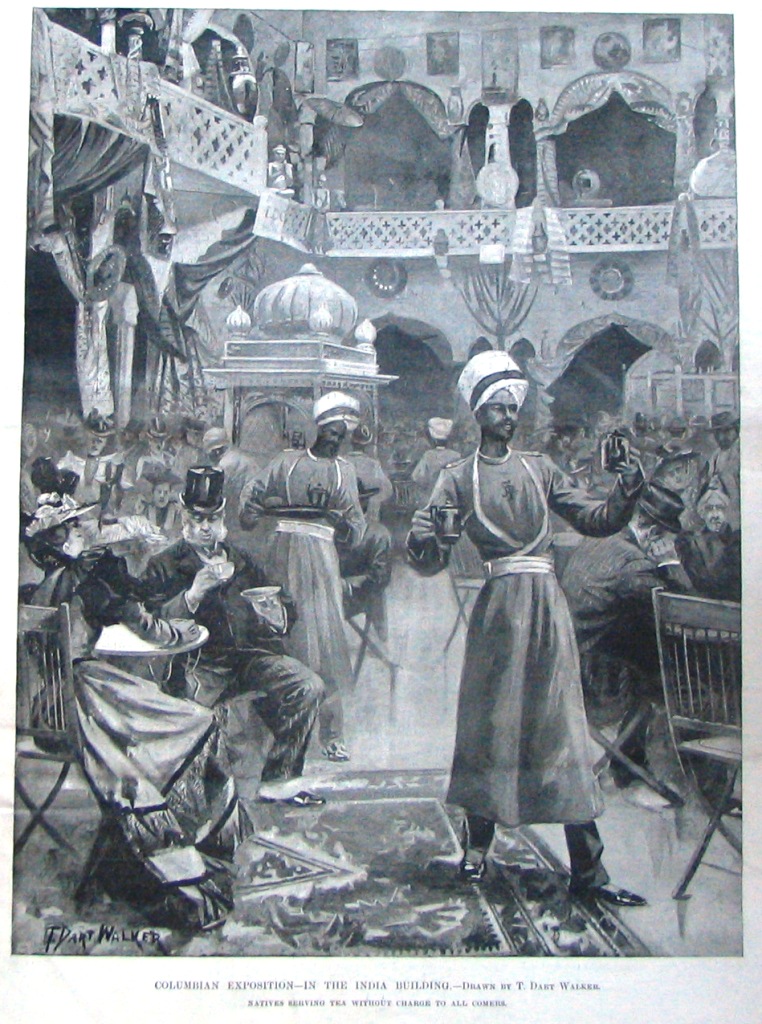
"Columbian Exposition in the India Building," with "natives serving tea without charge to all comers," from Harpers Weekly, July 1893
Source: ebay, Jan. 2007
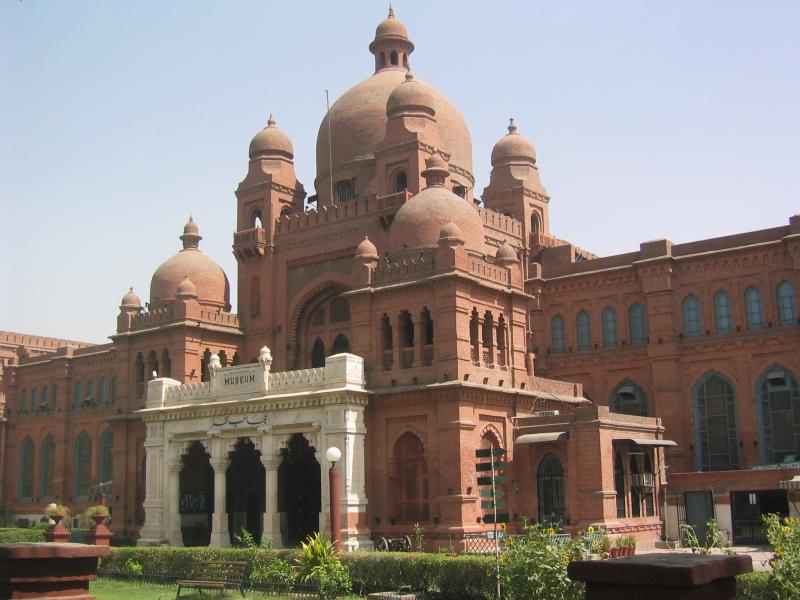
The Lahore Museum, opened in 1894 (the Royal Asiatic Society in Calcutta had started much earlier)
Source: http://www.sajjadzaidi.com/2003/jun/lahore/museum.jpg
(downloaded July 2005)
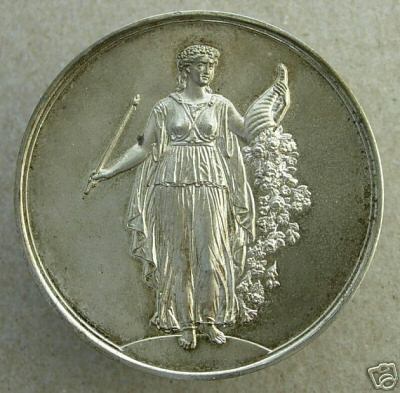 |
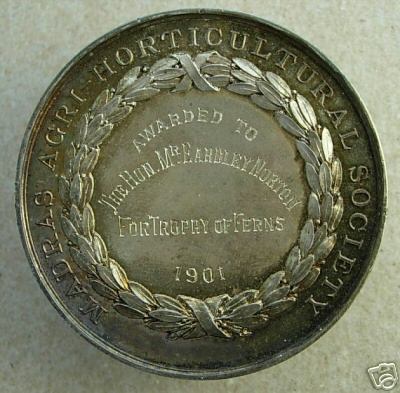 |
The Madras Horticultural Society commemorates a prize-winning "trophy of ferns," 1901
Source: ebay, June 2007
== Indian Routes index == Indian Routes sitemap == Glossary == FWP's main page ==